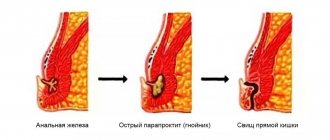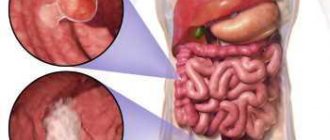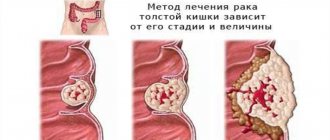The choice of surgery for bowel cancer will be determined based on factors such as the type and size of the tumor, and the presence or absence of secondary lesions. The team of doctors working with the patient at Asaf HaRofeh will discuss the best options with the patient.
Israel's third largest public hospital has achieved high success rates in performing bowel cancer operations. We offer our patients:
- Professionalism of the medical staff, highly qualified doctors who are experts in the field of treatment of colorectal oncology.
- Interdisciplinary approach in drawing up a therapeutic protocol, effective combination of advanced methods of diagnosis, treatment, and rehabilitation.
- Application of the latest operating technologies.
- Low rates of potential complications.
- Comfortable conditions of stay in the hospital for patients and their accompanying persons.
In 95% of cases of initial cancer, we cure the pathology. At advanced stages, we significantly improve the quality of life of people who contact us. Call to arrange treatment in Asaf HaRof.
Surgery to remove intestinal cancer in the early stages
If the neoplasm is at an early stage of development and is small in size, the surgeon can completely remove it along with a segment of healthy tissue. This operation is called local resection.
The removed tissue is sent to a laboratory for further study. The pathologist will determine whether the tumor is high- or low-grade and whether a second, more extensive operation is necessary.
During the second surgery, more tissue that may contain cancer cells is resected, which reduces the likelihood of the disease returning.
Colon cancer surgery
The type of surgical treatment will be determined based on the location of the tumor in the large intestine. The segment of the organ with the tumor is removed.
This operation is called colectomy. The amount of tissue resected depends on the exact location and size of the malignancy. If cancer cells have spread to lymph nodes near the colon, these will also be removed.
When the left half of the colon is resected, the operation is called a left hemicolectomy, the middle part (transverse) is called a transverse colectomy, and the right half is called a right hemicolectomy. If the sigmoid colon is removed, the surgery is called a sigmoid colectomy.
After the surgeon removes the part of the intestine with the tumor, its ends are reconnected, forming an anastomosis. In some cases, to give the area time to heal, a segment of intestine is removed outside the body through a specially created opening in the abdominal cavity - a stoma. When the small intestine is exposed to the abdominal wall, the operation is called ileostomy, and the large intestine is called colostomy.
As a rule, an ostomy is temporary. The ends of the intestine are reconnected together after a few months during the next surgical procedure.
If a large portion of the intestine is removed or your overall health is poor, a permanent colostomy or ileostomy may be created. Sometimes a doctor can accurately determine whether a permanent stoma is needed only during surgery.
It is not always possible to accurately determine the size of the tumor and the amount of tissue removed. All this information will be explained to the patient prior to surgery.
The operation to remove the large intestine is called a total colectomy and is performed using a cavity approach. The surgeon brings the upper part of the intestine to the surface of the abdominal cavity to create a colostomy or ileostomy.
When a doctor talks about a diagnosis of bowel cancer (or colorectal cancer), he means colon cancer or rectal cancer. But the intestine consists of several sections: the duodenum, small intestine, colon and rectum. Why do doctors combine the rectum and colon into the concept of “intestine”? The answer lies in morbidity statistics. Thus, in our country, rectal and colon cancers account for 5% of all cancers. This is 4th place among all cancer diseases. The share of oncology of the duodenum and small intestine accounts for less than 0.1%. Thus, a significant proportion of cancers occur in the colon and rectum.
How does bowel cancer develop?
The development of intestinal cancer in most cases begins from the mucous membrane. Often, cancer develops from an already existing benign formation - a polyp. Over time, the tumor narrows the intestinal lumen, making it difficult for food to move through. The tumor grows into blood vessels and damages them, which can be complicated by bleeding. As cancer cells progress, they grow into the intestinal wall and can grow into neighboring organs - the stomach, pancreas, liver. kidneys, bladder. In advanced cases, metastases appear in the liver and lungs.
Who can get bowel cancer?
The exact cause of bowel cancer is unknown. However, certain factors increase the likelihood of its development:
- Age over 50 years.
- In people with chronic colitis, Crohn's disease, ulcerative colitis. Especially if the disease lasts more than 10 years.
- Lifestyle: overweight, low physical activity, diet high in fat or animal products. Also excessive alcohol consumption and smoking.
- Hereditary factors: familial adenomatous polyposis (with this disease, the question of preventive removal of the colon is raised), Lynch disease is a hereditary disease in which cancer develops directly from the intestinal mucosa, bypassing the polyp stage.
- Burdened heredity, i.e. cases of colon cancer occurred in close relatives.
It should be remembered that the presence of an intestinal polyp is also a risk factor.
Symptoms of bowel cancer?
It should be noted that clinical manifestations of intestinal cancer may appear in already advanced cases. But the disease can still manifest itself as intestinal disorders:
- diarrhea, constipation, increased or decreased bowel movements.
- the appearance of mucus or blood in the stool. In this case, there may be very little blood.
- feeling of fullness or bloating.
- feelings of incomplete bowel movement after bowel movement.
- unexplained weight loss, general weakness.
- the appearance of pain in the rectum.
- sensation of a lump in the rectum.
- stomach ache
- anemia leading to fatigue.
Preventive actions
To date, there is no vaccine that will 100% prevent colon cancer. Eliminating risk factors reduces the likelihood of cancer, but does not prevent its occurrence. Therefore, all modern measures to prevent intestinal cancer are aimed at early detection of pathology.
Our center – “Republican Clinical Medical Center” of the Administration of the President of the Republic of Belarus – conducts a comprehensive examination to identify early forms of intestinal cancer. The main method is fibrocolonoscopy: a technique in which, after special bowel preparation, the doctor examines the intestines with a fibrocolonoscope. (see picture). During this study, all detected polyps are removed and their histological examination is carried out, and a biopsy is performed from all suspicious, pathologically altered areas of the colon and rectum. In order to improve patient tolerance of this procedure, fibrocolonoscopy in our center is performed under intravenous anesthesia.
How to treat bowel cancer?
The main treatment for colon cancer is surgery. In some cases, it is supplemented with chemotherapy or radiation therapy.
The essence of the operation is to remove the tumor with a section of the intestine and perform an anastomosis, i.e. suturing the ends of the intestine. (see picture). However, in most clinics, a large laparotomy incision is used to access the abdominal cavity. In the postoperative period, a rough scar is formed, which is not always cosmetically satisfactory for patients.
In our clinic, for the surgical treatment of colon cancer (colon and rectum), we use a technique that has long proven itself in foreign clinics. And for certain reasons, it is almost never used in hospitals in Belarus. In our center, resections of the colon and rectum for malignant pathology are performed laparoscopically.
To access the abdominal cavity, we use a set of laparoscopic instruments (see picture). With this method, it is possible to completely remove the area of the affected intestine with the mesentery through small holes in the abdominal cavity with the required amount of lymph node dissection. This method is low-traumatic for patients, but all oncological principles of surgical treatment of this pathology are observed.
Therefore, it is quite understandable that the postoperative period is much easier for patients operated on with this method, compared to patients operated on with the “open” method. Not to mention the cosmetic effect.
Separately, it is necessary to point out the unique operations for our country that we perform on the rectum. In our center, laparoscopic sphincter-sparing operations are performed for malignant lesions of the rectum, which does not require removal of the intestinal stoma through the anterior abdominal wall; this undoubtedly improves the quality of life with a preserved cosmetic effect.
Rectal cancer surgery
Before surgical treatment, the Israeli Oncology Department may recommend radiation, cytostatic drugs or chemoradiotherapy in order to reduce the size of the tumor and increase the effectiveness of surgery. This reduces the risk of relapse.
If the tumor is small, this is the initial stage, the surgeon will remove it during local resection (transanal). The doctor inserts an endoscope through the anus and resects the tumor. Another name for the operation is transanal endoscopic microsurgery.
Total mesorectumectomy (TME) for rectal cancer
In most operations for rectal cancer, the surgeon removes the tumor along with a segment of adjacent normal tissue. In addition, the fatty tissue around the rectum, the mesorectum, is resected. It contains blood vessels and lymph nodes, where metastases can occur, the spread of cancer cells to this area.
Removing the tumor and mesorectum significantly reduces the likelihood of the disease returning. The surgery is known as a total mesorectumectomy, or TME. There are several types of it, depending on the location of the neoplasm and its size.
If it is in the upper part of the rectum, the surgeon will remove the segment of the organ with the tumor and an area of healthy tissue. This operation is called anterior resection. The surgeon attaches the edge of the colon to the remaining part of the rectum.
Resection of the rectal mesorectum is performed up to 5 cm below the lower edge of the tumor. The entire peritoneal covering is not removed because there is a high risk of leakage after surgery.
If the malignant tumor is localized in the middle part of the rectum, the surgeon removes the main part of the organ, connects the colon to the anus, creating a coloanal anastomosis. Sometimes the doctor creates an analogue of the rectum from a section of the large intestine.
After this, a temporary stoma, usually an ileostomy, will most likely be required. It is usually necessary for 2 months while the intestines heal. Then surgery is performed to close the ileostomy. Sometimes a coloanal anastomosis requires a permanent stoma.
If the tumor is located in the lower part of the rectum, there may not be enough tissue left for the organ to function properly. Then the surgeon completely removes the anus and rectum. This operation is called abdominoperineal resection. After this, a permanent stoma is created.
Stages of development of colorectal cancer
The stage of the disease depends on the spread of the tumor relative to the intestinal walls. This affects symptoms and prognosis for recovery.
- Stage 1
is characterized by the fact that the tumor does not penetrate beyond the intestinal wall. Accordingly, there are practically no complaints. There may be a slight appearance of mucous discharge along with the feces. This stage is easily treatable, since the lymph nodes are not involved in the process and there are no metastases. - Stage 2
of the process is when the tumor grows into all layers of the large intestine and possibly involves the fiber that surrounds the rectum in the process. Metastases are not yet common. Symptoms become more varied: discomfort appears in the rectal area, which some patients describe as a sensation of a foreign body. Unpleasant sensations in the lower abdomen are disturbing, more abundant impurities appear in the stool, including mucus and blood. - Stage
3 may coincide with a violation of the patency of the rectum, the tumor becomes so large in size and/or metastases appear in the lymph nodes around the rectum. Malignant tissues grow into surrounding areas, affecting tissue, neighboring organs and lymph nodes. Patients may note a worsening of their condition, the appearance of dyspeptic disorders: rumbling in the abdomen, bloating, and an unreal urge to defecate. Disturbing spasms, pain, inclusions of blood in the stool, constipation and diarrhea appear. The general condition also becomes serious: the patient complains of weakness, pallor, decreased appetite and performance. - Stage
4 is the peak of tumor spread. It can stop the functioning of the intestines and (disturb) the functioning of neighboring organs. Metastasis is observed in distant lymph nodes, as well as in the liver, lungs, stomach, and bones. The most severe symptoms are intestinal obstruction, stool and gas retention, and vomiting. I am worried about pain in the abdomen, as well as in those organs that are affected by a secondary tumor. Painful exhaustion often occurs, and disruption of the central nervous system may occur.
The TNM system is used to classify the process stage. The designation T indicates the size of the tumor and its relationship to surrounding tissues. N are regional lymph nodes into which the process spreads. M is the designation of metastases, their number and distribution. This is a generally accepted classification that is used throughout the world.
Complications of the disease
- inflammatory processes in surrounding tissues;
- tumor growth into neighboring organs;
- obstructive intestinal obstruction;
- bleeding from the tumor.
Let's take a closer look at these states.
A tumor from the rectum can perforate the wall and grow in the tissue of the ureters, bladder, female genital organs, and prostate. This leads to disruption of their work and the appearance of corresponding symptoms.
Intestinal obstruction most often occurs if the tumor is located above the ampulla of the intestine or in the anorectum. Depending on the stage of the process, complete or partial intestinal obstruction develops.
Bleeding is most often observed when the tumor disintegrates. This complication is characteristic of exophytic growth of the tumor. If blood vessels pass through the tumor decay zone, they are also destroyed and blood loss occurs. This leads to anemia in the patient. Bleeding opens into the anus, and discharge of scarlet or dark blood is observed. Large blood loss is reflected in weakness and dizziness. The person becomes pale, has tinnitus, increased heart rate and breathing, and possible loss of consciousness.
Tumor growth into the bladder is accompanied by changes in urine. It becomes cloudy, fecal impurities may appear, and an inflammatory process occurs in the tissues of the organ. The patient is concerned about pain, burning, and a feeling of incomplete emptying of the bladder. A characteristic symptom is urine leaking from the anus.
Women may experience the formation of enterovaginal fistulas. Gases, feces, mucous discharge with a cloudy color and an unpleasant odor are released from the vagina.
It is important to note that all these complications accompany the late stages of pathology.
Diagnosis of rectal cancer
Screening occupies a special place in the diagnosis of rectal cancer. This is the early detection of cancer at those stages when the disease does not bother the patient. Screening methods:
- digital examination of the rectum;
- stool occult blood test;
- endoscopic techniques.
Please note that about 70% of carcinomas can be detected promptly using the digital method. And about 4-5% of a relatively healthy population gives a positive result on the hemocult test, which reacts to periodic bleeding of rectal cancer.
Of the endoscopic methods, colonoscopy is used. This method allows you to diagnose not only cancer, but also precancerous conditions.
Confirmation of the diagnosis is possible only after a biopsy. To do this, a fragment of tumor tissue is taken for analysis and sent for histological analysis.
Also, a number of studies are prescribed that determine the prevalence of tumor growth:
- Ultrasound through the abdominal wall and transrectal ultrasound;
- CT;
- MRI.
Based on accurate diagnosis, effective treatment can be prescribed. It is important for the attending physician to know the localization, spread of the tumor, the presence of metastases and their location.
Abdominal or laparoscopic surgery in Israel
Surgery for intestinal cancer is performed using both abdominal and laparoscopic approaches.
In the first case, the surgeon makes one large incision in the abdomen to remove the tumor. Its size can range from the lower part of the sternum to the level of the pelvic bones.
During a minimally invasive operation, the surgeon makes several small incisions through which he works using a laparoscope and special instruments.
This type of surgery takes longer, but patients usually recover faster. Sometimes during laparoscopic surgery the surgeon switches to open surgery. The doctor at Asaf HaRofeh will explain in detail all the risks and benefits of these approaches.
Several medical centers in Israel have robotic systems that are used during laparoscopic surgery. Robotic surgery reduces:
- Number of transitions to abdominal surgery.
- The likelihood of complications during and after surgery.
- Length of time spent in the clinic.
If the tumor is blocking the intestines
Surgery for bowel cancer is usually planned in advance, after diagnosis. But sometimes the tumor completely blocks the organ when it is discovered. This condition is called intestinal obstruction. In this situation, surgery is required immediately.
The surgeon may place a stent during a colonoscopy. It holds the organ open so that the intestines can resume normal function. Or immediate surgery to remove the tumor may be necessary.
Surgeries for advanced bowel cancer
Sometimes colorectal cancer comes back and can be removed. However, this will not cure the disease, because... Cancer cells have spread to other parts of the body and cannot be detected by scanning due to their small size. But removing the tumor can relieve symptoms and improve the patient's well-being.
Surgery for intestinal blockage
The tumor can cause intestinal obstruction, which leads to symptoms such as:
- Vomiting in large quantities.
- Nausea.
- Constipation.
- Pain.
- Feeling of overcrowding.
To alleviate this condition, a stent is used, which is placed during a colonoscopy using an endoscope. The stent makes the patient feel better and gives doctors time to plan surgery to remove the blocked part of the intestine.
Surgeries to remove small secondary lesions
Colon cancer metastases often develop in the liver or lungs, and cancer cells enter there through the bloodstream or lymphatic system.
Sometimes, if there are one or two small secondary lesions in the liver or lungs, surgery can be done to remove them.
Most often this concerns the liver.
Chemotherapy may be recommended before and after surgery.
To decide whether a given surgery is appropriate for a particular patient, the doctor at Asaf HaRofeh will consider the following factors:
- General health.
- How far the metastatic cancer has spread at the time of diagnosis.
- How quickly the tumor recurred.
- How many secondary lesions are there and their size.
- Where are the metastases located - in the liver or in the lungs.
- How close are metastatic foci to large blood vessels?
CT, PET or MRI are used. An angiogram will likely be performed to make sure surgery is possible.
Removal of secondary lesions in the liver is a specialized type of surgery, performed only in large surgical centers.
Surgery to remove liver metastases is very effective in some cases - 40 out of 100 people (40%) are alive after 5 years. Surgery can be repeated if the cancer returns. The surgeon can remove more than half of the liver if necessary because the organ tissue regenerates quickly. Treatment is less likely to be successful if:
- The cancer has spread to the lymph nodes near the liver.
- If metastases have affected another organ.
- The surgeon cannot completely remove all secondary lesions.
When it comes to lung surgery, it is performed as part of a clinical trial.
Specialized surgical methods for treating secondary liver cancer include:
- Chemoembolization of the hepatic artery.
- Selective internal radiation therapy (sirt).
- Radiofrequency ablation (RFA).
- Cryotherapy.
- Laser therapy.
Preparing for surgery for colon cancer in Israel
The surgeon, anesthesiologist and nurse interact with the patient before the operation. They explain what the surgery involves and what to expect after the anesthesia.
A number of tests are carried out to find out whether the patient can undergo surgery:
- Blood tests to help determine kidney and liver function.
- Chest X-ray to check the condition of the lungs.
- ECG to study heart health.
Some types of bowel cancer surgery do not require any diet or preparation of the organ. But in some cases it is necessary to follow a diet for several days. It is aimed at reducing the number of bowel movements.
Sometimes it is necessary to take laxatives for 2-3 days to help empty the bowels before surgery. In some cases, enemas are performed or the organ is completely washed out.
The clinic nurse may give the patient a high-energy protein drink the day before surgery, or the night before surgery. This will give the body energy and help you recover faster.
To prevent the development of infection, antibacterial therapy may be prescribed before surgery in tablets or injections.
To prevent complications such as blood clots due to poor mobility, medications such as heparin, tinzaparin, enoxaparin or dalteparin may be prescribed, usually in the form of injections. They are prescribed before surgery and for 4 weeks after it.
To determine the dose of the drugs, blood tests are ordered to measure the clotting time of the blood. The physical therapist also shows the patient exercises to do after surgery to reduce the chance of blood clots. In addition, the patient is provided with special elastic stockings.
Treatment methods
Prognosis depends on the stage of cancer
Treatment for rectal cancer depends on the type of tumor, stage of the disease and location. The main goal is the complete removal of existing foci of malignant growth, suppression of relapse and restoration of natural intestinal functions.
In later stages, it is important to provide symptomatic therapy, including pain relief. The main methods of non-surgical treatment are chemotherapy and radiation therapy. Both methods are aimed at reducing the size of an existing tumor and suppressing metastasis.
Recovery after surgery for colon cancer in Israel
Nurses and a physical therapist help the patient begin moving as soon as possible. If you must stay in bed, deep breathing and leg exercises can help to prevent infections and blood clots.
In order to recover after surgery for intestinal cancer, the patient is prescribed:
1. A drip (intravenous infusion), through which fluid enters the body until the patient is unable to eat or drink.
2. Catheter into the bladder.
3. Drains to eliminate excess fluid and speed up the healing process.
4. Nasogastric tube for 24 hours, which removes excess digestive juices that cause nausea.
The patient will be unable to eat or drink for several days until the bowel functions normally. As a rule, they start with a small amount of water, gradually increase it, and then the patient is transferred to a light diet. This takes a couple of days or more, depending on the type of surgery.
Effective painkillers are used to eliminate pain.
After surgery to remove bowel cancer, you may have diarrhea for a while, especially if a large part of the organ was removed. Perhaps alternating diarrhea with constipation. The doctor will give recommendations on these issues.
Depending on the operation performed, the patient will stay in the clinic for 7-10 days.
Possible consequences of surgery for bowel cancer
Side effects are typical for any type of treatment, their occurrence depends on:
- type of surgery;
- general health;
- previous therapy.
Possible undesirable consequences of surgery for bowel cancer include:
- pain;
- bleeding;
- blood clot formation;
- anastomotic leaks;
- risk of infections;
- intestinal problems;
- intestinal obstruction;
- formation of scar tissue in the intestines;
- fatigue;
- disturbances in the functioning of the reproductive organs - loss of fertility in women if the uterus is removed; erectile dysfunction or problems with ejaculation in men;
- disturbances in the functioning of the bladder.
Symptoms
Colorectal cancer can remain asymptomatic for many years, so it is often diagnosed at a late stage. A timely visit to a specialist will help prevent the progression of the disease and limit yourself to gentle treatment methods.
The main sign of cancer development is often occult bleeding accompanied by progressive anemia, or obvious bleeding from the lower GI tract and changes in bowel movements.
Other early symptoms of bowel cancer include:
- rectal bleeding;
- blood in stool
- anemia;
- persistent diarrhea or diarrhea and alternating constipation;
- change in the shape and consistency of stool;
- abdominal pain;
- constant urge to defecate.
- weight loss;
- weakness, fatigue;
- lack of appetite.
If symptoms in the form of blood in the stool and constant discomfort in the intestines do not go away within several weeks, it is recommended to immediately seek advice from a physician or gastroenterologist. If a malignant pathology is suspected, the patient will be referred to an oncologist.
Colostomy
The surgeon creates a colostomy by suturing the end of the colon to an opening in the abdomen. This opening is called a stoma. It may be round or oval and appear red and moist.
Touching it does not cause pain, since there is no innervation. Therefore, you need to be careful not to injure her, as you may not feel that any damage has been done. After surgery, the stoma will be swollen and gradually become smaller and flatter. A colostomy bag is attached to the skin on the abdomen above the stoma.
For bowel cancer, a colostomy may be temporary. It allows the intestines to recover after tumor removal. A few months later, another operation is performed to restore the intestines and close the stoma.
A nurse at Asaf HaRofeh Hospital will teach you how to care for your stoma and how to clean and change colostomy bags.
An ileostomy is different in that the end of the small intestine is sutured to an opening in the abdominal cavity.
Complaints and clinical picture
The clinical picture of colon cancer at stage 3 is determined by the location of the tumor (right or left colon, rectum) and the presence of complications. However, there are a few common symptoms:
- Pain.
- Impaired motor-evacuation function.
- Change in the general condition of the patient.
- The presence of pathological discharge from the anus.
Pain
Pain is one of the leading symptoms of stage 3 colon cancer. There are several reasons for its occurrence, and, as a rule, they act simultaneously:
- Spasm and impaired motility of the intestinal wall.
- Perifocal or intratumoral inflammation.
- The spread of cancer to neighboring organs: stomach, liver, pancreas, organs and tissue of the pelvis.
Impaired motor-evacuation function
Impaired motor function in colorectal cancer is caused by two aspects:
- With endophytic tumor growth (it grows inside the wall, spreading over large areas), the contractility of the intestine is impaired.
- With exophytic growth, the tumor grows inside the intestinal lumen, partially or completely blocking it.
In the initial sections of the colon, there is a wide lumen, so obstruction occurs relatively rarely and only with large tumor sizes. But when cancer is localized in the left parts, especially in the terminal part, this situation is a common occurrence.
With partial obstruction of the intestinal lumen, chronic constipation is characteristic, which is replaced by foul-smelling diarrhea. At first, feces cannot overcome the obstacle and “stay” in the adductor section of the intestine. Under the influence of microflora, they undergo processes of decay and fermentation, which leads to their liquefaction and subsequent diarrhea. For some time there is relief, but the situation repeats and gets worse. As a result, such a serious complication as intestinal obstruction may develop. It requires immediate hospitalization and a decision on surgical intervention.
In addition, patients with intestinal cancer complain of dyspepsia - nausea, bloating, gas production.
Change in the patient's general condition
Common symptoms of colorectal cancer are:
- Weight loss, unexplained weight loss.
- General weakness and increased fatigue.
- Pale and pasty skin - often tumors ulcerate and bleed, which leads to the development of iron deficiency anemia against the background of chronic blood loss.
Pathological discharge from the anus
The presence of pathological discharge from the anus is more characteristic of tumors localized in the sigmoid and rectum.
Often cancer of this localization is manifested by the release of mucus, pus and blood. Blood may be present in the form of streaks on the surface of the stool, there may be spotting during bowel movements, or bleeding may develop due to the disintegration of the tumor.
Palpable tumor in the abdomen
Stage 3 colon cancer is characterized by the presence of a large tumor that can be palpated through the abdominal wall. In some cases, with the development of calostasis, stool accumulates in the adductor section of the intestine, which can also be palpated and is mistaken for a tumor. In any case, the detection of such a sign requires further examination.
Survival and prognosis for colon cancer after surgery
Here are some statistics for general guidance. 5-year and 10-year survival rates are terms that doctors use. They don't mean living only for 5 or 10 years. This is the time during which research and monitoring of the participants’ health was carried out.
General prognosis for colon cancer:
- 75 out of 100 people (75%) live a year or more after diagnosis.
- 60 out of 100 (60%) – survival of 5 years or more.
- Almost 60 out of 100 (60%) have a survival rate of 10 years or more.
General prognosis for rectal cancer:
- 80 out of 100 people (80%) survive for a year or more after diagnosis.
- 60 out of 100 people (60%) have a survival rate of 5 years or more.
- Almost 60 out of 100 people (60%) have a survival rate of 10 years or more.
Survival rates for bowel cancer are higher in women than in men.
Statistics for different stages of the disease:
- Stage 1 – 95 out of 100 people (95%) – survival 5 or more years after diagnosis.
- Stage 2 - depending on various factors for 80 out of 100 people (80%) - survival rate is 5 years. Almost 90 out of 100 women (90%) have a survival rate of 5 years or more.
- Stage 3 – approximately 63 out of 100 (63%) have a survival rate of 5 years or more. The outcome depends on the number of affected lymph nodes.
- Stage 4 – for 7 out of 100 men (7%) and for 8 out of 100 women (8%) survival is 5 years or more.
These statistics give only a general idea, they are not detailed, and do not take into account many individual factors that influence prognosis and treatment.
Causes
Constant constipation is the cause of cancer development
Oncological diseases are still actively studied by specialists from various medical fields. A huge number of etiological factors have been identified that can cause one or another type of oncology.
At the same time, acquired and congenital diseases and negative influences are only provocateurs of tumor development.
The immediate cause of the growth of a malignant tumor lies in the functioning of cells. Cell functions include growth, development, division, transmission of genetic information, and performance of specific tasks in different tissues.
When the process of cell division, which occurs due to spontaneous mutations and other factors, is disrupted, uncontrolled growth of cell mass occurs. The resulting tumor differs from the surrounding tissues and does not perform specific functions.
Cancer cells constantly divide and receive an active blood supply. As a result, not only the primary tumor site is formed, but also distant metastases.
Possible causes of rectal cancer:
- Congenital genetic mutations.
- Congenital and acquired inflammatory bowel diseases. Thus, familial adenomatous polyposis, characterized by the growth of benign tumors in the intestine, significantly increases the risk of subsequent cancer development.
- Chronic damage to the intestinal epithelium. This may be due to injury or chronic exposure to certain chemicals. Under the influence of such negative factors, epithelial cells first change and then turn into malignant ones.
Only in very rare cases are doctors able to determine the cause of rectal cancer in a particular patient.
Treatment after surgery for colon cancer in Israel
After surgery, chemotherapy is often used for 6-7 months. Chemotherapy is taken orally or intravenously. The main task is to prevent recurrence or penetration of the tumor process into other parts of the body. Chemotherapy is most effective for small tumors.
Radiation therapy after surgery is used in the following cases:
- If the tumor is difficult to remove.
- When, according to the surgeon, cancer cells could remain.
- If a malignant tumor has grown through the intestinal wall or spreads to nearby lymph nodes.
Treatment is carried out over 4-5 weeks, for a total of 20-25 procedures. Chemoradiation therapy may be recommended.










